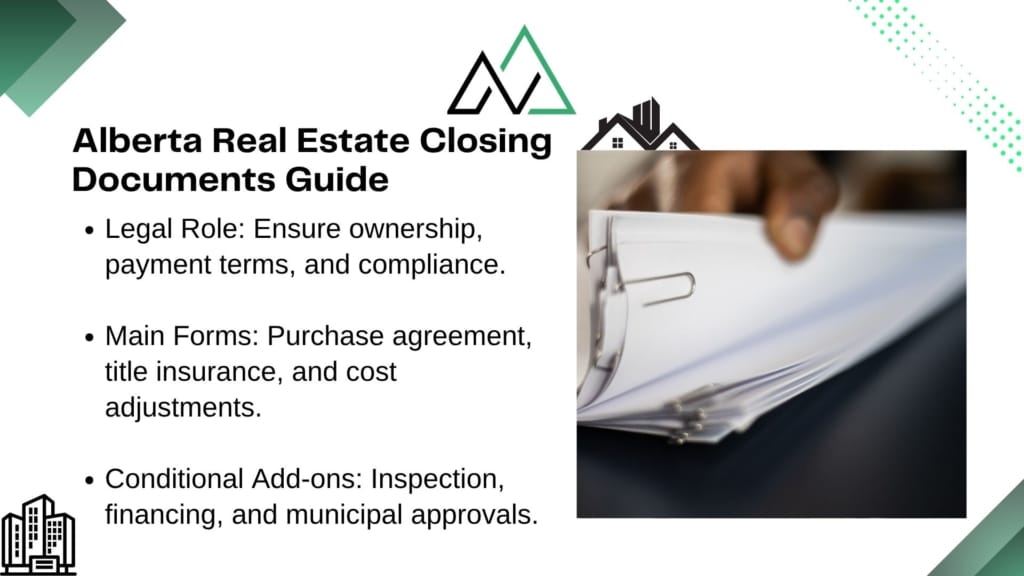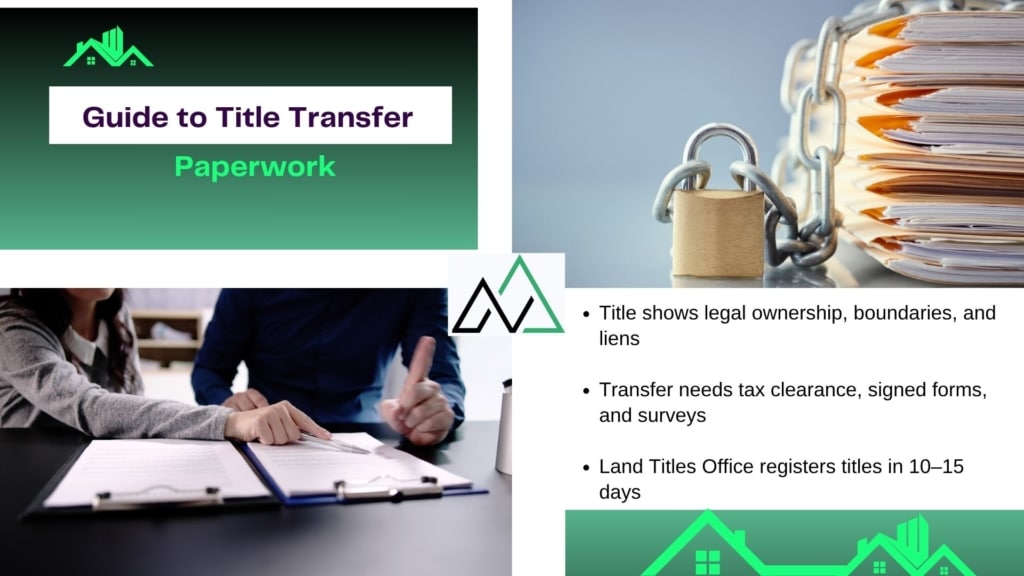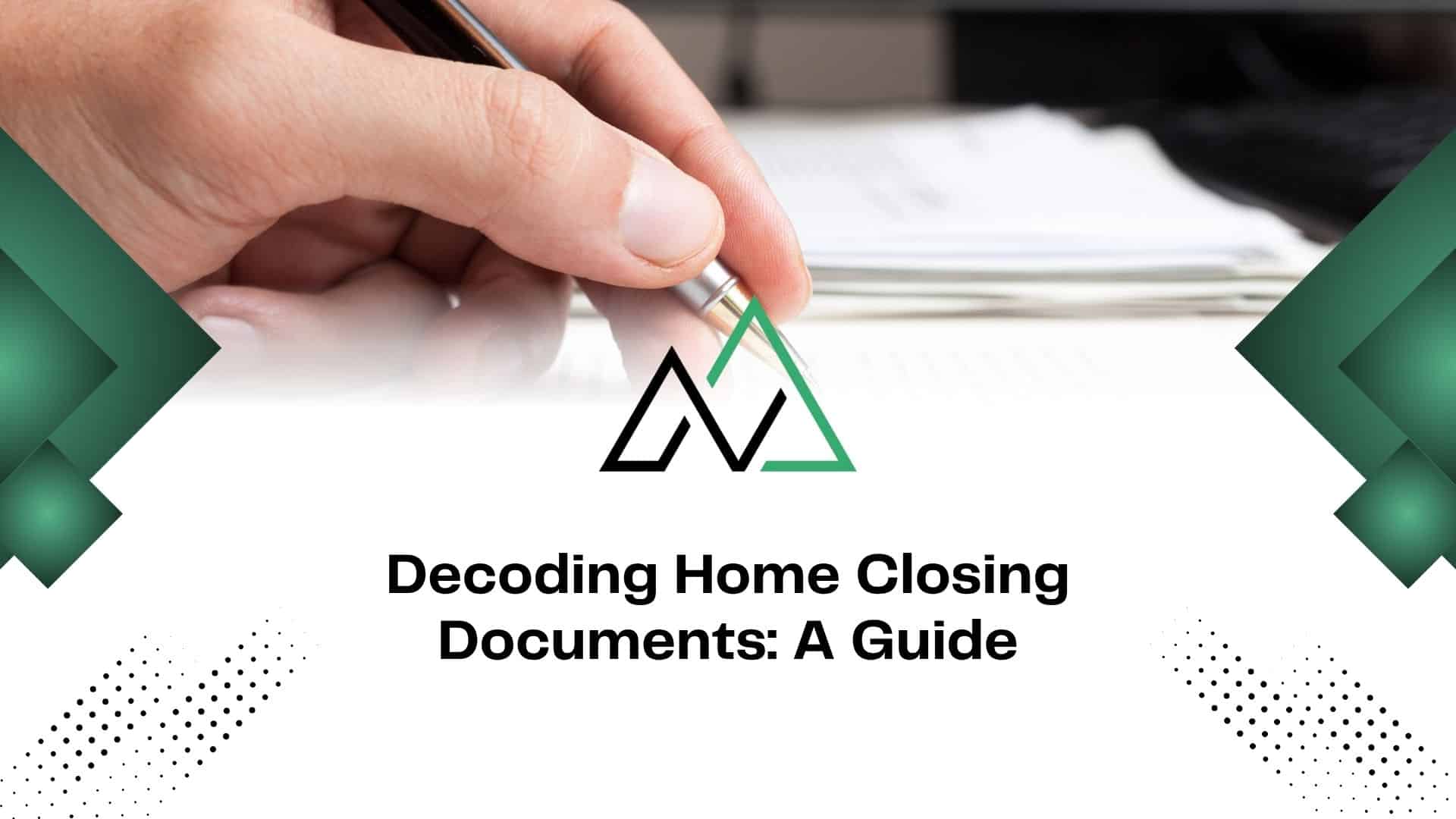Real estate paperwork can be overwhelming, even for first-time buyers. In Alberta’s fast-paced housing market, it’s key to understand your closing documents. These documents outline your rights, what you must do, and the details of your property deal.
New Homes Alberta makes it easier by breaking down complex contracts. They explain everything from purchase agreements to title transfers. For instance, your Statement of Adjustments shows the final costs, and the Mortgage Commitment Letter explains your loan terms.
Canadian real estate deals have unique parts like provincial land title systems and tax rules. Getting one detail wrong could lead to extra fees or delays. So, it’s important to review these documents carefully and with the right help to be ready for closing day.
Key Takeaways
- Closing documents legally bind buyers and sellers in Alberta real estate transactions
- Common paperwork includes purchase agreements, title transfers, and mortgage commitments
- Provincial regulations impact tax calculations and ownership transfers
- Clear explanations of legal terms prevent misunderstandings
- Thorough review protects against hidden costs or contractual oversights
Essential Components of Alberta Closing Documents

Buying or selling property in Alberta requires specific documents. These papers prove who owns the property and what financial deals are made. They protect both buyers and sellers and follow Alberta’s rules.
Purpose of Closing Paperwork in Canadian Real Estate
Closing documents play three key roles in Alberta:
- Legal Protection: They make sure agreements are legally binding.
- Financial Clarity: They show exactly how much money changes hands and when.
- Compliance Assurance: They ensure all rules for property transfers are followed.
Local governments use these documents to update records and figure out land transfer taxes. In Calgary, there’s a 72-hour rule for bidding. This rule makes sure all offers are considered before finalizing the deal.
Core Document Categories
Alberta’s closing documents are divided into two main types:
- Standard Forms – Purchase Agreement (outlines price and conditions) – Statement of Adjustments (calculates prorated costs) – Title Insurance Certificate (protects against ownership disputes)
- Conditional Addenda – Home Inspection Contingencies – Financing Approval Clauses – Municipal Compliance Certificates
The Alberta Land Title Act has rules for these documents. For example, title insurance must include the legal description. Investors should check each document meets their local needs. Edmonton and Calgary have different filing rules.
Knowing these parts helps you check for errors or odd clauses. Always compare your documents to Alberta’s standards. This careful check prevents delays and keeps your investment safe.
How to Read Closing Documents Effectively

Mastering closing documents is all about organization and detail. Follow this proven method to catch any mistakes in Alberta’s real estate market.
Systematic Review Process
Use this three-step method to review your documents well:
Verifying Property Details
Check these important details across all documents:
- Lot dimensions vs municipal land surveys
- Zoning classifications in title vs local bylaws
- Square footage measurements in multiple sources
- Column 1: Fee type (e.g., land transfer tax)
- Column 2: Contract amount vs final statement
- Column 3: Payment due dates
Red Flag Identification
Watch out for these warning signs in Alberta:
Unexpected Fee Recognition
Common surprise charges in Alberta include:
- Underground utility connection fees
- Historical property lien clearances
- Title insurance policy exceptions
Legal Description Accuracy
Make sure these details match your inspection:
- Easement locations marked on surveys
- Right-of-way access points
- Shared driveway agreements
When checking legal descriptions, compare the municipal land registry with your contract’s Exhibit B. Look for differences in fence lines or drainage easements.
Understanding Title Transfer Documents

When dealing with property closing documents in Alberta, understanding the title transfer process is key. It legally confirms your ownership and meets provincial rules. Let’s explore what you need to know about certificates of title and how to register them.
Certificate of Title Components
In Alberta, the Torrens system makes your certificate of title the ultimate proof of ownership. It has three main parts:
- Legal Description: This shows the exact property boundaries and identifiers that match municipal records.
- Ownership Details: It lists the current owners and how much they own.
- Encumbrances: It notes any liens, easements, or covenants that affect the property.
When you look at closing statements, pay close attention to these parts. For instance, Source 1 explains how utility liens are listed under “Charges” on page 2 of the certificate.
Land Title Office Requirements
To finish title transfers in Alberta, you must follow certain rules:
- Get a municipal tax clearance certificate (valid for 30 days).
- Submit a fully signed Transfer of Land document.
- If the property boundaries have changed, include a current surveyor’s certificate.
The Alberta Land Titles Office usually handles registrations in 10-15 business days, as Source 3 states. First-time buyers might want to consider title insurance. It’s optional but can protect against hidden risks like unregistered easements.
Interpreting Mortgage Closing Paperwork
Mortgage closing documents are key to understanding your loan’s terms and future financial duties. They detail important info like interest rates, repayment schedules, and legal duties. Reviewing these papers carefully can help avoid surprises and ensure your loan fits your homeownership plans.
What to Look for in Your Mortgage Commitment
Your mortgage commitment letter is a big deal. It shows the lender’s okay to finance your home purchase. Look for these important points:
- Loan amount and interest rate type (fixed vs variable)
- CMHC insurance requirements for high-ratio mortgages
- Prepayment penalty calculations for early payments
- Conditions tied to property appraisal or employment verification
With recent Bank of Canada rate hikes, fixed-rate mortgages are gaining favor in Alberta. Lenders must now clearly explain how rate changes affect variable-rate payments. Also, be aware of any restrictions on refinancing CMHC-insured mortgages during the term.
Breaking Down the Amortization Schedule
This table shows how your payments are split between principal and interest over time. Here’s a simple example for a $400,000 mortgage:
| Year | Principal Paid | Interest Paid |
|---|---|---|
| 1 | $8,200 | $19,800 |
| 5 | $45,000 | $92,000 |
| 10 | $105,000 | $155,000 |
Early payments mostly cover interest, not principal. Use this schedule to plan for faster payments or explore refinancing. For variable-rate mortgages, make sure your documents explain how payments change if rates go up.
Professional Document Assistance Options
Understanding real estate closing documents can be tough. Legal terms and financial details need careful attention. While some try to manage it alone, getting help is often wise to avoid mistakes. In Alberta, there are many ways to get support in understanding these documents.
Notaries vs. Lawyers: Choosing Your Ally
In Alberta, you have two main choices for help:
- Notary Publics: Great for simple deals, they check identities, sign documents, and confirm copies at a lower cost.
- Real Estate Lawyers: Key for complex deals, they check contracts, fix title issues, and give advice on zoning or liens.
A 2023 study found 14% of deals find repair needs or title problems during checks. This shows why it’s important to have experts look over everything. Missing details or wrong records can cost a lot after you buy.
Cost vs. Protection Analysis
Notary fees are $200-$500, but lawyers cost $1,200-$2,000. Lawyers might seem more expensive, but they offer more protection by:
- Finding unapproved changes in property history
- Challenging rules that limit land use
- Helping with seller offers for unexpected repairs
For those looking for a balance, services like New Homes Alberta’s verification team ((403) 305-9167) check documents against city records and builder contracts. They spot issues in plans or permits, adding safety before you buy.
Remember, small mistakes in paperwork can cause big delays or problems later. Working with experts keeps your investment safe from hidden dangers.
Conclusion
Understanding Alberta closing documents is key. It turns complex papers into useful information. By analyzing title transfers and legal duties, buyers can avoid future problems.
Verifying signatures and payment plans gives buyers confidence. This is true for Canadian real estate deals.
Important steps include checking land title records and mortgage details. New Homes Alberta helps with Alberta’s rules, aiding first-time buyers and investors. They spot issues early to save money.
Knowing how each document affects ownership and money is important. Careful review of documents brings peace of mind in a competitive market. Experts suggest asking questions and clarifying terms during the closing.
Good property deals need careful research and trusted advice. By focusing on accurate documents and following the law, buyers protect their investments. New Homes Alberta is a key resource for navigating Alberta’s real estate with confidence.


